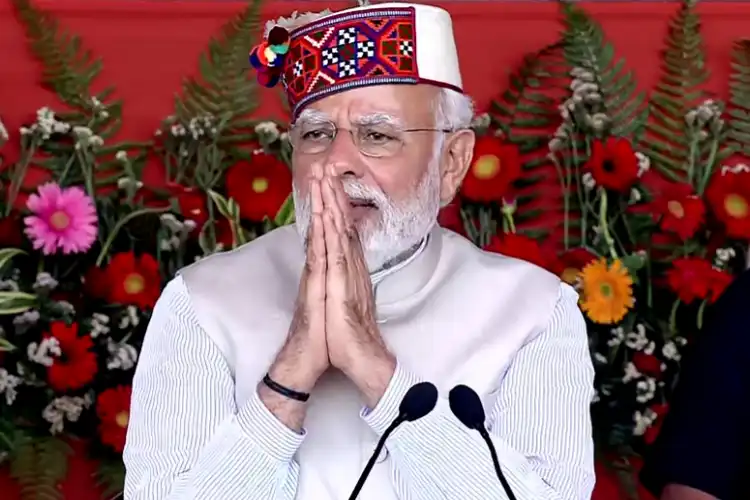
 Sushma Ramachandran
Sushma Ramachandran
As the Modi government crosses the significant milestone of eight years in power, it is a good time to reflect on the hits and misses over this period. The economy has gone through tough times since 2014, many of which have been due to the external environment. The Covid pandemic has been the most significant of these developments as not just India but the entire world went through trying times both in terms of physical health and economic well-being. The second external blow has been the conflict in Ukraine that has sent ripples far and wide from its location in distant Europe. It has led to disastrous supply chain disruptions and soaring prices of metals and crude oil. These have all had a fallout in this country.
But momentous domestic events have also made a sea change in the country’s economic growth. The first was the sudden decision to go for demonetization in November 2016. This shook up the economy in many ways and led to genuine hardships, especially in rural areas where cash has always been the dominant currency. It was followed in mid-2017 by the launch of the much-awaited single-point Goods and Services Tax (GST). The new levy created difficulties for small businesses that couldn't cope with the digitization as they were required to shift to the new tax regime. Plus it had been introduced initially with numerous complex regulations though these were toned down gradually month by month.
As a result of these tumultuous events during the last eight years, the GDP growth rate has not risen at the desired rate. It dipped due to demonetization and then later due to the impact of GST. The economy may have gone back to a higher growth path subsequently but then the pandemic struck and the scenario has been difficult since then. Overall growth over this period is thus lower than during the UPA era. The latest data shows a buoyant 8.7 percent growth for the last fiscal - 2021-22 - but it must be kept in mind that this is on the low base of a 6.6 percent contraction in the previous year. Even so, India retains the tag of the world’s fastest-growing economy with expectations that it will achieve a 7 to 8 percent increase in the current fiscal - 2022-23.
Lower growth notwithstanding, there is no doubt the Modi government has achieved some major milestones. These have gone a long way in bringing about greater ease of living for the masses. The first, and most significant, has been the move to introduce Jan Dhan bank accounts for the poorest of the poor. This initiative toward financial inclusion has gone a long way in ensuring that subsidies and benefits meant for target groups reach them. The scheme which was introduced in 2014 enables anyone to open a bank account through the cap on deposits has been kept at Rs. one lakh.
The Jan Dhan Yojana has ended up becoming the world’s largest financial inclusion program and continues to expand as the number of beneficiaries has now touched 44 crores. One of its biggest positives has been the efficient transfer of subsidies and other benefits to target beneficiaries without any dilution of the funds. In the past, former Prime Minister Rajiv Gandhi had commented that only 15 paise out of one rupee spent on subsidies for the poor reached the beneficiaries. With the Jan Dhan accounts, the entire amount is finally reaching those for whom it is intended. The accounts can also be accessed on mobiles and withdrawn at any time by the beneficiaries.
The entire eco-system of the Jan Dhan accounts, the unique identification system of Aadhar and mobiles is now known as JAM. And it has transformed the entire process of providing benefits to the poorest of the poor.
Apart from financial inclusion, however, the second major reform for which this government can take credit is the launch of GST. Though it was initiated 17 years ago and the process was pushed through by both the Vajpayee and Manmohan Singh regimes, it was ultimately introduced only by the current NDA government. It was a bold move at a time when many naysayers felt there was need to wait to ensure that systems were in place before launching it. In the event, it did run into many technical roadblocks. But five years down the line, there is no doubt that it has become a success. Despite the hiccups of the pandemic, GST collections have rebounded and have crossed Rs. one lakh crore for the past nine months.
Other important reforms include the introduction of the Insolvency and Bankruptcy Code and the passing of the Real Estate Regulation Act. The former led to substantial reduction of non performing assets of banks while the latter has come has tremendous relief to consumers who have faced harassment at the hands of the builders lobby.
Yet another major milestone in improving ease of living has been the launch of Ujjwala scheme, providing a one time subsidy for LPG stoves, thereby ensuring that millions are able to access this cleaner cooking fuel. Data shows that the numbers of those now using cooking gas has risen exponentially, reducing dependence on wood fired stoves that are harmful to health.
On the minus side, it has to be conceded that the demonetisation experiment caused distress in many parts of the country. It did succeed, however, in spurring the digitisation of the economy which has increased considerably since that time. At the same time, its second objective of reducing black money in the system does not seem to have achieved the same level of success.
The problem of excess red tape, however, continues in the government despite the fact that a large degree of digitisation has taken place in many sectors. In fact, the present NDA government has made a sustained effort to bring all public - private interfaces into online mode. This has considerably reduced both delays and corruption in the system. Even so, innumerable bureaucratic rules and regulations continue in the system, creating hardship for investors and ordinary citizens alike.
Also Read: Budget takes long term view of India’s growth
Viewed purely in terms of growth data, there is no doubt the Modi government may not have done as well as the Manmohan Singh regime. But in terms of implementing reforms and bringing about greater ease of business as well as ease of living for the people, it scores much higher.
